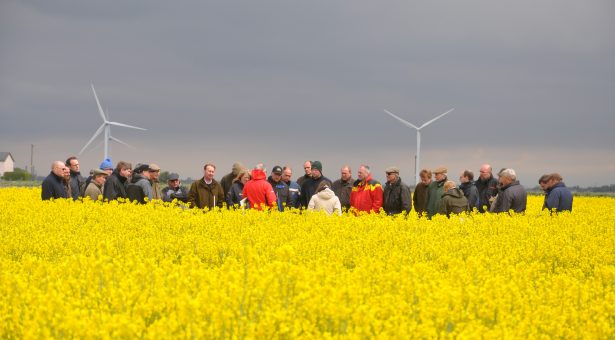Computational reconstruction of gene regulatory networks (WP1)

Central to the BRAVO research project is work package 1 which provides computational reconstruction of the gene regulatory networks governing major life-cycle transitions using high-resolution time-series expression data in selected tissues provided by work packages 2-5.
As part of this work package we have developed an Oilseed Rape Developmental Expression Resource (ORDER) browser which provides access to the developmental transcriptome of Brassica napus during floral transition.
The aims of work package 1 are:
- To develop a gene expression atlas which will be made available to public and private sector users via a web-based Graphical User Interface (GUI)
- To build a predictive gene network model using trait and gene expression data to allow us to identify which are the most important genes for the floral transition/heading date allowing manipulation by breeders
- To produce a database of genetic variation within genes of interest
- To identify gene network components that lead to phenotypic variation in germination, fertility and yield. To date we have produced 600 transcriptomes, across different tissues as a gene expression resource
Selection of genes and markers for trait optimisation in plant breeding ideally requires an integrated view of gene network function across developmental time in different tissues and how this network is affected by environmental cues. In work package 1 we are reconstructing these regulatory gene networks using computational methods.
We use EcoTILLING to identify natural variation in the network components. This information together with evaluating the fit of ordinary differential equation models of the networks provides initial validation of the inferred regulatory networks.
Genes common to more than one network will help identify candidates to explain the correlations observed between traits.
Mathematical modelling of genome-wide expression analyses coupled with phenotypic assessment of large diversity panels has allowed us to create an expression atlas for the Brassica research community to exploit.
We are using this to develop an understanding of how environmentally responsive gene networks, with many shared components, allow control of flowering time, inflorescence architecture and flower, fruit and seed characteristics.
Work package 1 team
- Professor Richard Morris (John Innes Centre) is a mathematical modeller interested in understanding the ‘algorithms’ that plants employ to process signals that guide developmental decisions. He has a strong track-record in developing predictive computational models to underpin biological insights, including the floral transition
- Postdoctoral Researcher: Dr Alex Calderwood (John Innes Centre) is interested in how developmental transitions are controlled in Brassica and in particular the switch to flowering
- Postdoctoral Researcher: Dr Hugh Woolfenden (John Innes Centre) is a specialist in mathematical modelling and bioinformatic analysis across temporal and spatial scales
- PhD Student: Shannon Woodhouse (John Innes Centre) is working on understanding developmental transitions in Brassica oleracea
- Project Partner: Professor Ian Bancroft (University of York) has extensive experience and achievement in Brassica genomics and Associative Transcriptomics to determine the control of plant traits that are of relevance to food security, industrial biotechnology or the environment. He has a strong track record in marker technology, the translation of knowledge from model to crop including the development of super high oleic oilseed rape
- Postdoctoral Researcher: Lenka Havlickova (University of York) an expert in molecular breeding of rapeseed and manager of a Brassica napus genomics platform
